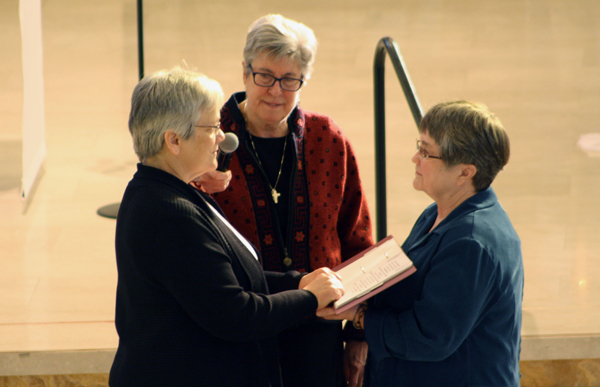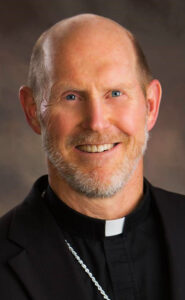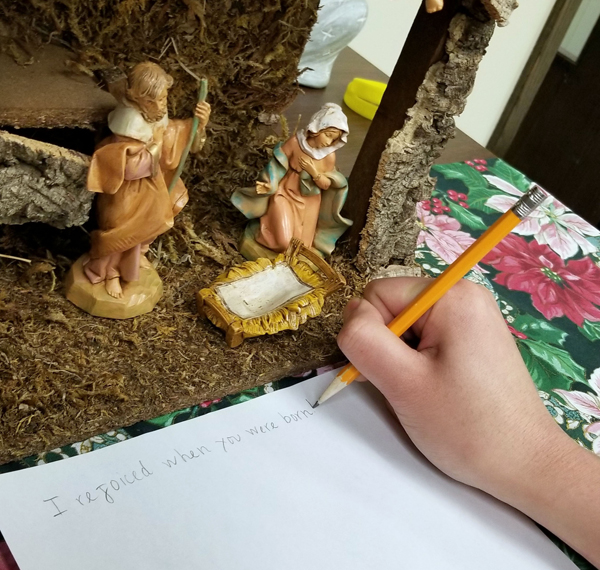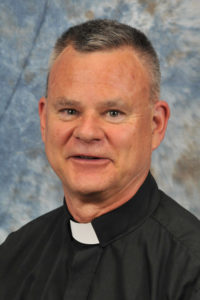By Kathy Berken
If the only thing you know about St. Lucy is that she embodies light, because her name is taken from the Latin word lux (“light”), that might be enough. But let me give you some insights about the life of this saint, whose feast day was Dec. 13.
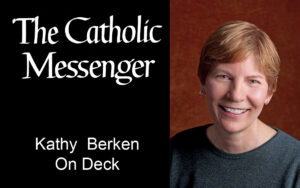 As with many saints of yore, legends tend to accumulate as the centuries go by. Lucy is no exception. Born in Sicily in 283, she died in 304 toward the end of Roman Emperor Diocletian’s bloody reign to kill Christians, shortly before the Emperor Constantine came into power.
As with many saints of yore, legends tend to accumulate as the centuries go by. Lucy is no exception. Born in Sicily in 283, she died in 304 toward the end of Roman Emperor Diocletian’s bloody reign to kill Christians, shortly before the Emperor Constantine came into power.
Legend has it that Lucy’s widowed mother had a disease similar to the woman with hemorrhages that Jesus healed. So that her daughter would have a secure life, she arranged to have Lucy marry a man from a wealthy pagan family, but Lucy had vowed to remain a virgin and dedicate her life to Christ. Lucy died for her faith, and Christians immediately began to tell the story of her courage and loyalty to Christ.
Over the years, Christians embellished the story to bolster Lucy’s holiness. She was sent to a brothel to be defiled and when guards came to take her away to kill her; teams of oxen couldn’t move her. Burning logs were placed on her but she did not die. Her eyes were gouged out but they were miraculously healed. Eventually she met death by a sword to the throat.
When the pre-Gregorian calendar listed Dec. 13 as the year’s shortest day, it was fitting to celebrate St. Lucy to represent light. No doubt you’ve seen pictures of Scandinavian girls and women dressed in white with a red sash (indicating Lucy’s martyrdom), wearing crowns of lit candles. Iconographic images show Lucy holding a golden plate with two eyes, representing not only her torture and miraculous cure, but one way we experience light — through our eyes.
Despite the folklore, Lucy is a significant saint for our times. Celebrating a martyr whose name means “light,” we carry candles to illuminate the darkness of December. As we recognize Advent as a time of waiting in the darkness for the Christ Child to be born in our hearts, we can bring St. Lucy into our rituals to teach us about the spiritual power of light.
Years ago, I attended a “Last Lecture Series” where an English professor friend, Mike Murphy, gave a summary of his life by highlighting moments that brought him significant meaning and support. Each time he told a story, he struck a large wooden match, held it up, and let it burn out. These flashes of light helped him to see what was important, life giving and true. I still remember those flashes of light and our silence while we waited for the fire to extinguish.
Mike’s match lights included meeting his wife for the first time, being present at his sons’ births, feeling welcome at a new school and friends visiting him in the hospital after his heart attack.
He was a fun-loving and hope-filled man who was usually the life of any party, who also recognized certain moments as bright flashes that caught his attention and helped him remember more vividly the very times when he felt more profoundly the presence of God.
You might want to use the match-light ritual for your family or community. Sit in a circle in the dark, ask St. Lucy for guidance, and pass around a box of kitchen matches. Take turns mentioning a highlight of your life as you strike a match, hold it up and let it burn out. Say a closing prayer, focusing on how you are breaking through the darkness of December with match lights and feeling hopeful as you walk your journey with Jesus along a path illumined with grace.
(Kathy Berken has a master’s degree in theology from St. Catherine University, St. Paul, Minn. She lived and worked at The Arche, L’Arche in Clinton 1999-2009 and is author of “Walking on a Rolling Deck: Life on the Ark (stories from The Arch).”)







